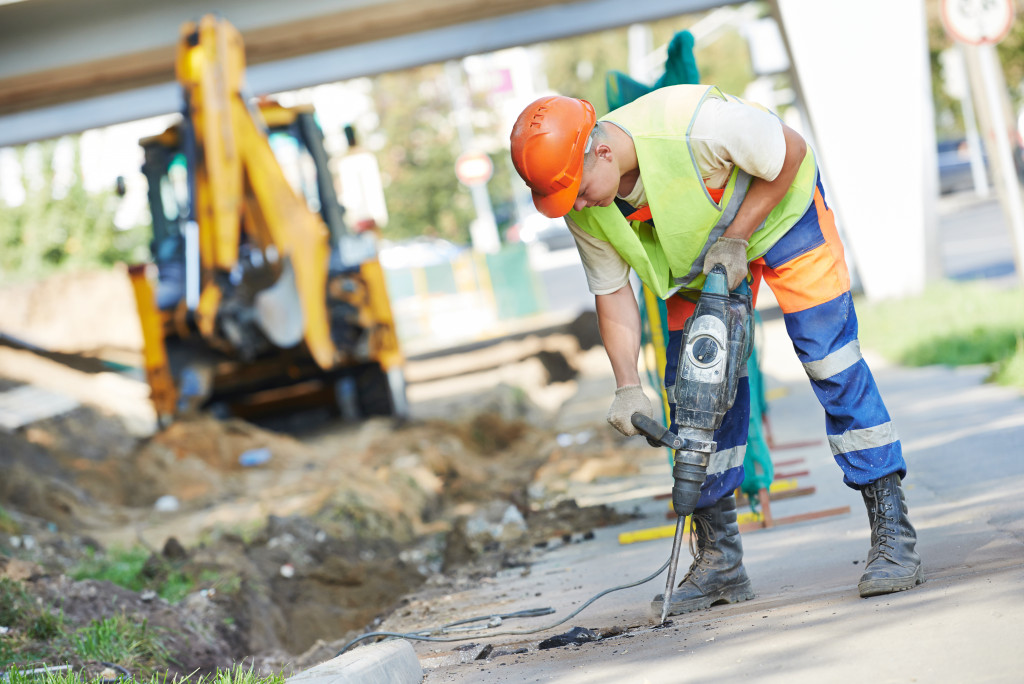Extending the lifespan of old structures often can do more harm than good. When an old building has lived its purpose for more than 100 years, architects and civil engineers who lead demolition teams often recommend demolition projects to keep the nearby buildings safe.
Contrary to how it may seem, there is more to demolition projects than just getting an excavator for hire to destroy existing structures. Demolition teams follow a stringent process to ensure the safe dismantling of an old building. Here’s a rundown of what you may expect in a pre-demolition project:
Surveying
Surveying is the initial process of checking and inspecting the structure and the site where the structure was built. There are two main types of surveying: building surveying and structural surveying.
Building surveying refers to the inspection process where the demolition team looks into how the building was constructed and what it was used for. They list the construction materials used as well as the presence of toxins as these will help them decide the best demolition method to use later on.
Equally important in this part of the demolition process is the checking for possible drainage, flooding, and erosion problems, which may arise if a new building was constructed on the site. Meanwhile, structural surveying refers to the process where the demolition team examines the structure of the building to look into the method of construction. It is the part of the process where the team studies the aspects of the structural system, its design, and its current condition.
Hazmat extractions
The initial inspection conducted by the demolition team provides plenty of insight into the next step in the demolition process. If the team found a significant amount of asbestos and other hazardous materials on the site of the old building, they will immediately report this to another team which handles the removal of dangerous materials. Worksafe.govt.nz reiterates the immediate and safe removal of asbestos if it is found on the site,
Demolition planning
Before the actual process of demolishing a building, the demolition team must first submit a plan detailing how they intend to carry out the demolition project. This plan provides meticulous details about the location of the building and its distance from other nearby structures. It includes information about the demolition procedure, the timeline, the sequence to be followed, and the chosen method for the demolition project.
Safety measures
While the most hazardous materials used in the old structure were already previously removed, demolition teams are still exposed to harmful substances that may impact their health. Dirt. Dust. Heat. Chemical exposure, These are just some of the most common substances demolition teams may encounter. To minimize direct exposure and prevent health hazards, the demolition team needs to recommend safety measures and protocols such as the use of safety gear and protective suits. These recommendations are all made in this part of the pre-demolition process.
The Demolition Process

The pre-demolition process conducted by the demolition team ultimately leads to the decision on which demolition method to use for the project. Demolition methods are primarily categorized as either explosive or non-explosive. As the name suggests, explosive demolition makes use of explosive devices to dismantle an old structure. This method may either cause the building to collapse on its footprint or the side. On the other hand, non-explosive demolition is the more common type of demolition. It is where we see demolition teams using wrecking balls, sledgehammers, or getting an excavator for hire to destroy an old structure.
Cleaning up
Demolition projects can be a bit messy. Whether the demolition team chooses the explosive or the non-explosive method, the reality is that they will have to spend quite a bit of time and effort cleaning up the site of the old structure. The cleanup stage involves a lot of manual work, but alongside this, the teams may also rely on the use of excavators to help them clean up the site while working through rough and unpaved terrains.
A quick note on budgeting
Demolishing a building does not come cheap. Your team will likely incur more before, during, and after the demolition project. In this regard, it is essential to assign an individual who will take charge of managing project expenses. As its nature is to destruct and dismantle an existing structure, demolition projects may invariably have a negative connotation to the outside observer. But the truth is, demolishing is not as bad as it sounds, especially when you consider its role in keeping nearby structures, neighborhoods, and communities safe and free from building pillars that have grown weak over time.
